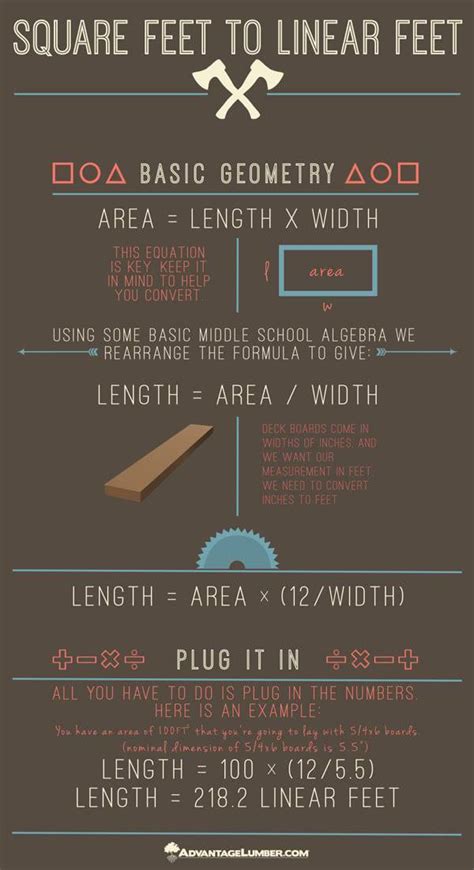Simple Steps: Converting Linear Feet to Square Feet
Understanding the difference between linear feet and square feet is crucial for various tasks, from home improvement projects to landscaping. Linear feet measure length in a straight line, while square feet measure area. Knowing how to convert between the two is essential for accurate calculations and avoiding costly mistakes. This guide will walk you through the simple steps, clarifying common misconceptions and providing practical examples.
What are Linear Feet and Square Feet?
Before diving into the conversion, let's clarify the definitions:
-
Linear Feet: This measures length in a straight line. Think of it as measuring a single dimension—how long something is. For example, the linear feet of a wall is simply its length.
-
Square Feet: This measures area, encompassing two dimensions—length and width. It's calculated by multiplying the length (in feet) by the width (in feet). For example, the square footage of a room is its length multiplied by its width.
Why is Converting Linear Feet to Square Feet Necessary?
You can't directly convert linear feet to square feet without knowing another dimension. Linear feet only give you one side of the area equation. You need both length and width to calculate square footage. This conversion is essential when:
- Buying flooring or carpet: You need square footage to determine how much material to purchase.
- Calculating paint needed: Paint coverage is usually given in square feet per gallon.
- Determining the size of a room or space: Square footage is a standard measure of area.
- Landscaping: Calculating the area of a lawn or garden bed requires square footage.
How to Convert Linear Feet to Square Feet: The Simple Formula
The key to converting is understanding that you cannot convert linear feet directly to square feet unless you know the width. The formula is:
Square Feet = Linear Feet x Width (in feet)
Let's break this down with an example:
You have a rectangular room with a wall measuring 12 linear feet. If the width of the room is 10 feet, the square footage of that wall is:
12 linear feet x 10 feet = 120 square feet
What if I only have linear feet and the shape isn't rectangular?
For non-rectangular shapes, the process becomes slightly more complex. You'll need to break the area down into smaller, manageable rectangular sections, calculate the square footage of each section, and then add them together. For irregular shapes, you might need to approximate or use more advanced geometric calculations.
Calculating Square Footage of Irregular Shapes: A Simple Example
Imagine a room that's an L-shape. Divide the L into two rectangles. Measure the length and width of each rectangle separately, calculate their individual square footage, and sum the results to get the total square footage of the L-shaped room.
Frequently Asked Questions (FAQs)
How do I convert linear feet to square yards?
First, convert linear feet to square feet using the method described above. Then, divide the square footage by 9 (since there are 9 square feet in a square yard).
Can I use a calculator to convert linear feet to square feet?
Yes, many online calculators and apps are available to perform this conversion. Simply input the linear feet and width.
What are some common mistakes to avoid when converting?
The most common mistake is trying to convert linear feet directly to square feet without considering the second dimension (width). Always double-check your measurements to ensure accuracy.
Conclusion
Converting linear feet to square feet is a straightforward process once you understand the basic formula and the difference between linear and square measurements. By following the steps outlined in this guide and being mindful of the shape of the area you're measuring, you can confidently perform these calculations for various applications. Remember, accuracy is key, so always double-check your measurements!

